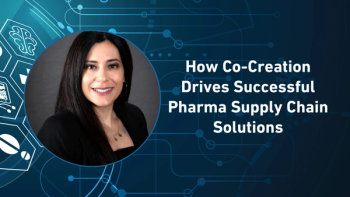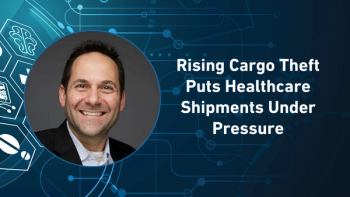
How a 250% Tariff Might Ripple Through Pharma Supply Chains and Spur Domestic Production
In the second part of his Pharma Commerce video interview, Dave Malenfant, a healthcare supply chain expert, outlines how the impact of a steep pharmaceutical import tariff varies across raw materials, components, and finished products, along with why such a policy could incentivize companies to shift production to the US.
In a video interview with Pharma Commerce, Dave Malenfant, a healthcare supply chain expert, discusses the potential impact of a proposed 250% tariff on pharmaceutical imports, emphasizing that the effect depends heavily on where in the supply chain the tariff is applied. If imposed on active pharmaceutical ingredients (APIs), the impact would be minimal, as APIs contribute relatively little to the total cost of a finished drug and adjustments could be made through negotiation. However, if applied to finished pharmaceuticals or key components—such as bottle plugs, closures, molded parts, and glass—the cost implications could be significant, since these materials represent a substantial portion of overall manufacturing costs.
Malenfant notes that the US conducts much of its pharmaceutical research and development domestically but often outsources manufacturing to lower-cost countries, only to re-import the products for sale. He questions this practice, arguing that products sold in the US should be manufactured domestically to strengthen the supply chain and reduce dependency on foreign production. He cites examples of non-US companies, such as the world’s largest generic drugmaker, establishing manufacturing facilities in the United States as a step in the right direction.
The interview also addresses duty drawback. a current process allowing companies to recover duties paid on imported pharmaceuticals, which the proposed tariff regulation would reportedly eliminate. Without duty drawback, the financial burden on manufacturers and distributors would increase.
While higher component costs could drive up product expenses, Malenfant believes that companies are unlikely to pass these increases directly to patients. Instead, they may absorb the costs by reducing margins, particularly since US pharma companies already operate with some of the highest profit margins globally. However, the ripple effect would reach insurance companies, prompting complex negotiations between insurers, distributors, and manufacturers to prevent direct cost increases to patients and maintain access to medications.
He also comments on how the tariff could cascade through the pharma supply chain; the downstream operational challenges that might arise for pharma companies;mitigation strategies industry leaders should already be exploring; and much more.
A transcript of his conversation with PC can be found below.
PC: Can you walk us through a simulation of how a 250% tariff could cascade through the pharma supply chain, from raw material sourcing to finished drug pricing? How does it also reshape the competitive landscape?
Malenfant: It depends on what phase that 250% applies. If it applies to the raw material, the impact on the entire supply chain is going to be minimal because it's absorbed in the cost of the raw material. The raw material may only be 5% or 10% of the total cost of the product.
But now, if we're into the components like I mentioned before, the 250% has got a bigger impact. As you move towards the finished product, it has a bigger impact. It's cumulative, but it's not. The reason why I say that is because the marginal impact is greater as you get to the finished product. If you're importing the finished product, and there's a 250% duty on it, it has a very big impact on what the company is going to do from a distribution standpoint, the patients.
If you're importing it at $2 and now you got 250%, you're now at almost $5, so what do we do when we go forward, because it's going to have a greater impact on our markets. I hope that makes sense, because the theory behind the 250% terror is to force pharmaceutical companies to manufacture in the United States.
Little trick—what a lot of pharmaceutical companies do is they take advantage of these tax laws. What they'll do is say, well, okay, because there isn't a lot of duty, if we manufacture in Europe and we import into the United States, it's going to be cheaper for us than producing in the United States. Now, in my opinion, that's intuitively wrong—if we're going to sell in the United States, we should make it in the United States. I believe that the tariffs are meant as an incentive for the companies to come back to the United States and manufacture in the United States.
Newsletter
Stay ahead in the life sciences industry with Pharmaceutical Commerce, the latest news, trends, and strategies in drug distribution, commercialization, and market access.




